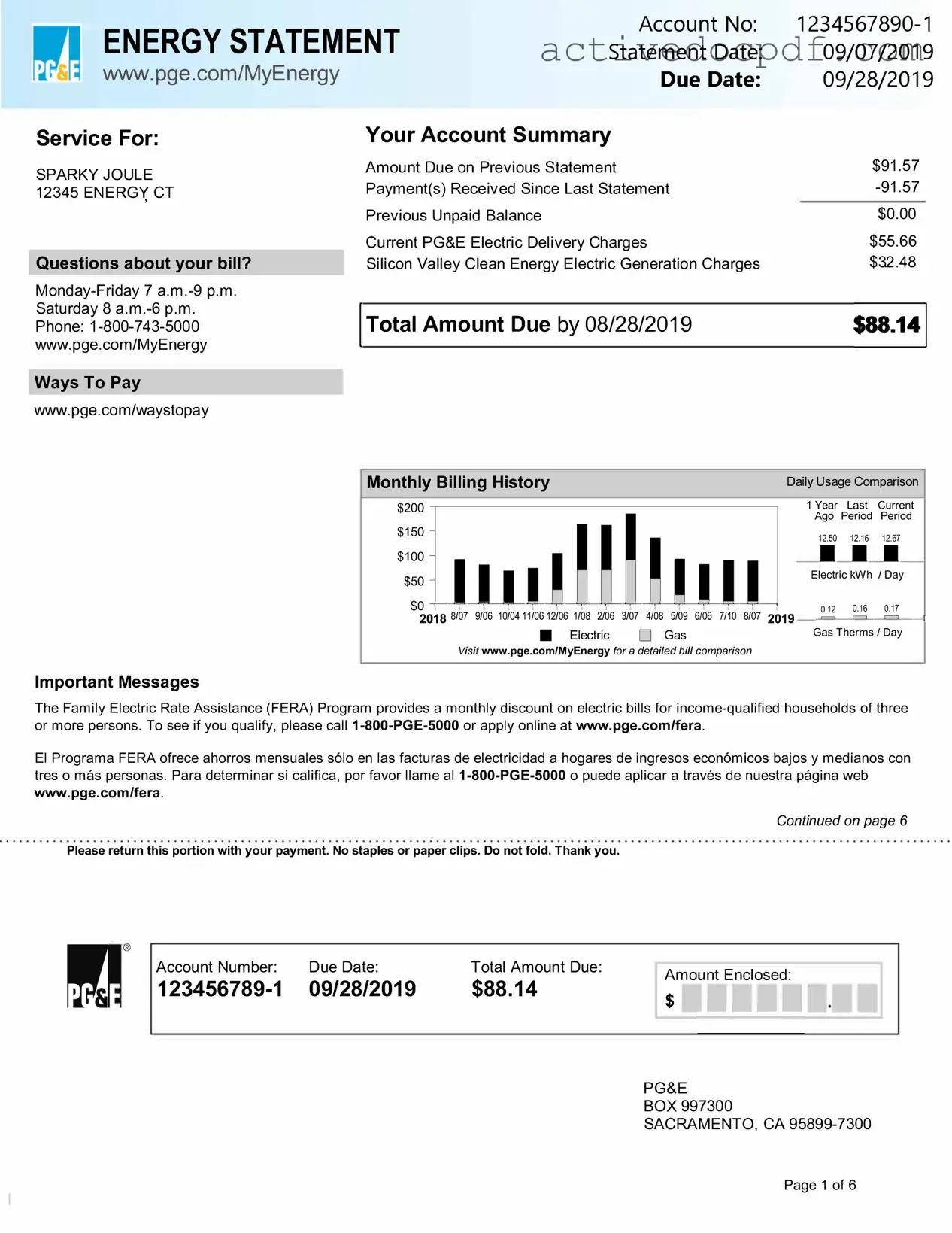The Utility Bill form is primarily used to verify the residency of individuals or businesses. This form typically requires information related to utility services, such as water, electricity, or gas. It helps confirm that the applicant resides at the address listed on the form, which is often necessary for applications involving government assistance, loans, or other services requiring proof of residency.
Individuals applying for various programs may need to complete the Utility Bill form. This includes:
-
Residents seeking housing assistance
-
Individuals applying for financial aid or loans
-
Businesses needing to establish a service address
Essentially, anyone who needs to provide proof of residency may be required to fill out this form.
The Utility Bill form typically asks for the following information:
-
Full name of the applicant
-
Current address
-
Utility provider's name
-
Account number associated with the utility service
-
Date of the bill
Make sure to fill out all sections completely and accurately to avoid any delays in processing.
Submission methods may vary based on the organization requesting the form. Common submission methods include:
-
Emailing a scanned copy of the completed form
-
Mailing a physical copy to the specified address
-
Uploading the form through an online portal, if available
Check the specific instructions provided by the organization to ensure proper submission.
What should I do if I don’t have a utility bill?
If you do not have a utility bill in your name, consider the following alternatives:
-
Provide a bill from a family member or roommate, along with a signed statement confirming your residency
-
Use other forms of proof, such as a lease agreement or bank statement that includes your name and address
Always verify with the requesting organization to see what forms of documentation they accept.
Processing times can vary depending on the organization and the volume of applications they are handling. Typically, you can expect a response within:
-
1 to 2 weeks for standard applications
-
Longer during peak periods or if additional documentation is required
It’s a good idea to follow up if you have not received confirmation within the expected timeframe.
